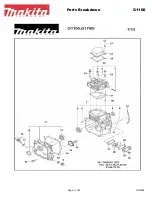
Video Grabber User Manual - v. 1.19 (FW 1.29)
34
4.2.2.4.
Network bridging
In typical setup each Video Grabber has its own, individual connection to the network (or networks in
case when both LAN ports are used). It is however possible to configure a couple of Video Grabbers to
share their network interfaces so that only two network connections would be needed to transmit the
captured data from 3 or more devices.
While this solution limits the amount of network connections needed it does have two main
drawbacks:
1.
In case of network connection failure all Video Grabbers that are using it will lose network
connectivity while in standard setup one network connection failure affects only one Video
Grabber.
2.
With limited amount of network connections comes limited bandwidth available to each
Video Grabber.
N
et
w
o
rk
B
N
et
w
o
rk
A
N
et
w
o
rk
B
N
et
w
o
rk
A
N
et
w
o
rk
B
N
et
w
o
rk
A
Figure 26: Video Grabbers connected to networks A and B in a typical way
When network bridging is configured then the amount of necessary network connections is limited to
1 per network. See the figure and necessary settings below.
N
et
w
o
rk
B
N
et
w
o
rk
A
bridge
bridge
Figure 27: Video Grabbers connected to networks A and B using network bridging
The LAN1 bridge anti-loop termination and LAN2 bridge anti-loop termination settings are set so that
no network loop is created.
















































